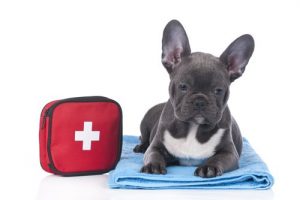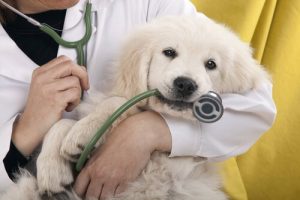Must-Have Items For Your Doggy First Aid Kit

Although, of course, we hope that nothing bad ever happens to our pet, it’s always better to be prepared, so that we’re able to act quickly in situations that could put the health or even the life of our furry friends at risk. That’s why today we’ll give you the definitive list of all the things you should make sure to include in your dog’s first aid kit in case of emergencies.
Why is it so important to have a pet first aid kit?
Firstly, let’s look at why it’s so important to keep the appropriate equipment on hand. Keep in mind that having a well-equipped first aid kit especially for your dog will allow you not only to solve minor issues that don’t require the intervention of a vet, but also to act quickly in the event of an emergency and provide appropriate care until professional attention arrives.
This is important because our dogs, as well as sometimes showing symptoms of diseases that need urgent treatment, may also be exposed to injury both inside and outside the home. For example:
- Bites
- Poisoning with different substances
- Choking
- Burns
- Cuts
- Traffic accidents

As with everything in life, it’s always better to be prepared – and in this context, it’s much better to be able to act quickly in emergencies that could put the health or life of our beloved pets at risk. So pay close attention to this list of things you should be sure to include in your pet’s first aid kit.
Essential items for your doggy first aid kit
Before putting your dog’s first aid kit together, keep in mind that everything you include should be approved for veterinary use. You should remember that your pet is a dog and not a person (even though sometimes it can be hard to!). It has a different pH balance, and a totally distinct metabolism. That’s why it’s so important that any disinfectants and medications you use are approved for use on dogs. If you’re in any doubt, consult with a qualified professional to make 100% sure that nothing you include in your home first aid kit could end up putting your dog at risk.
With this in mind, check out this list of essential items for your doggy first aid kit:
- Gauze, swabs, bandages and plasters
- Disinfectants
- Analgesics and anti-inflammatories
- Diarrhea medication
- A quick-read thermometer made of unbreakable material (for rectal use)
- Saline solution (for cleaning out your dog’s eyes)
- Scissors for cutting bandages
- Latex or plastic gloves
- An emetic substance (oxygenated water is a good option for this)
Other items to include in your doggy first aid kit
To make sure your first aid kit is fully complete, you should also think about including:
- Sharp tweezers for removing ticks
- A syringe for administering liquid medicines
- Nail clippers
- Antiparasitic drugs
When you’re putting the kit together, you should also bear in mind the specific characteristics of your pet, and the health problems it might be likely to suffer. For example:
- A solution for cleaning out ears, especially important if your dog has long or floppy ears.
- An ointment or similar substance to alleviate different dermatological conditions.
- Antihistamines for animals allergic to insect bites, especially wasp stings.
Some more tips for preparing a top-notch first aid kit
As well as all of the above, you should keep the following extra tips in mind when sourcing and putting together your first aid kit:
- Make sure you store the first aid kit in a place that’s easy to access, so you’ll be able to get your hands on the things you need quickly if there’s an emergency.
- Revise the kit every so often to make sure the medication hasn’t passed its expiration date.
- Ensure that the kit is well-organised, so it’s easy to find what you need quickly.
What’s more, it can be a good idea to have a second kit handy for when you and your dog find yourselves on the move, for example on long trips or vacations.
Last but not least, don’t forget to include (in a prominent position) the emergency phone numbers or contact information of trusted vets and veterinary professionals.
Getting up to speed with pet first aid

At the end of all this it’s important to say that, as well as having a well-equipped first aid kit for your dog, it’s just as crucial that you know what to do with these items if your furry friend should find itself in need of urgent care.
If you’re able to, you should enroll yourself in a pet first aid course to find out the basics relating to, among other things:
- Checking vital signs
- Resuscitation
- Help an animal that’s having trouble breathing or is choking
- Identifying and responding to symptoms of shock
- Cleaning and bandaging wounds
- Splinting fractures
- Dealing with insect bites
- Taking urgent steps in case of gastric torsion
- Controlling your pet’s temperature
Nowadays, a great many veterinary practices offer such courses, and it would be well worth your while to investigate the options out there.
This text is provided for informational purposes only and does not replace consultation with a professional. If in doubt, consult your specialist.